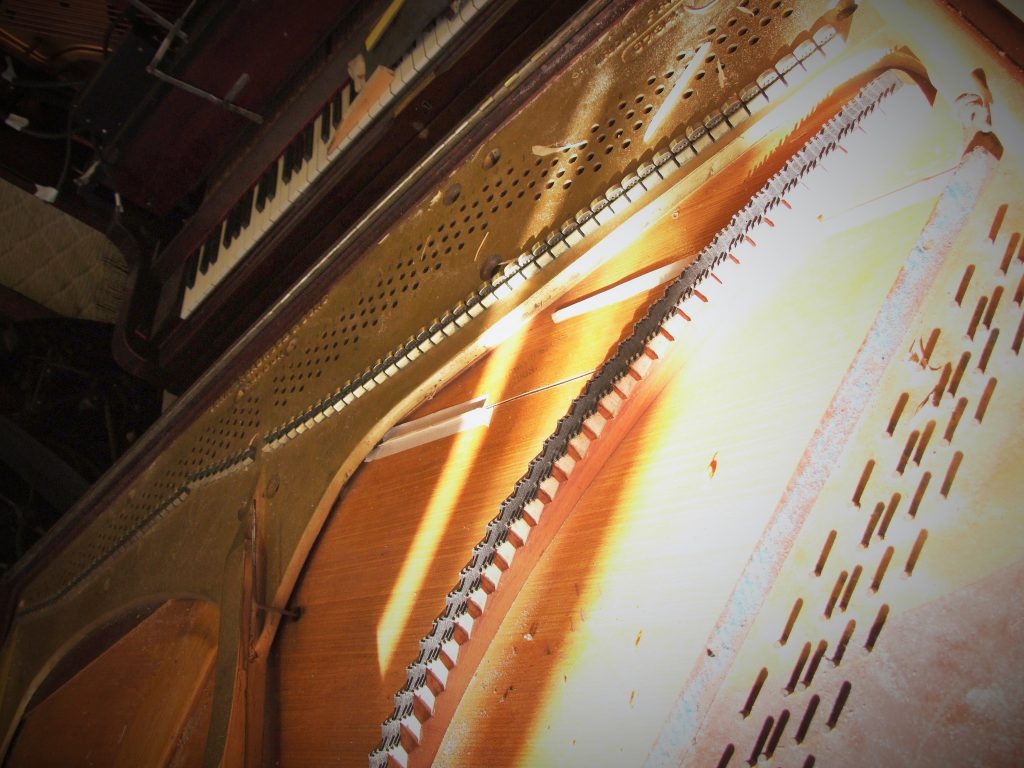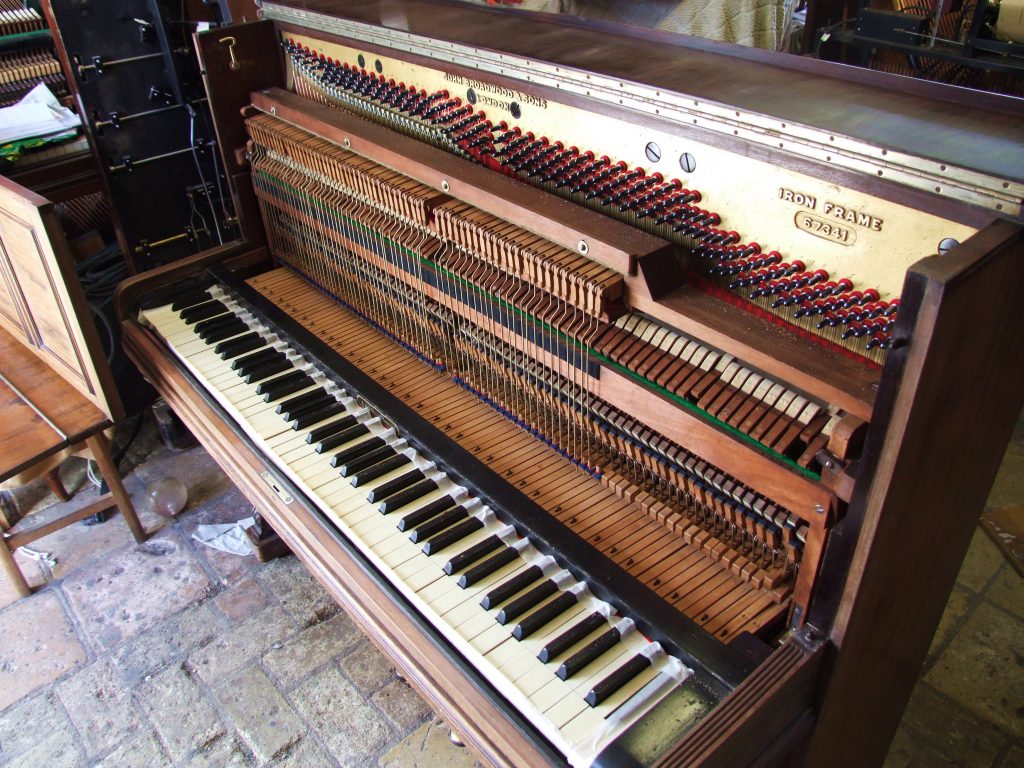
By the time it reached our house in Collington my old piano was in a sorry state: well over a hundred years old; multiple house moves; a hit and miss cleaning and tuning regime; and most recently the indignity of being hauled up in the air by an industrial crane, and spending 2 days at the back of a bundle of goods heading for the environs of Peterborough. It sat sadly in the corner of the dining room looking the worse for wear. I decided it deserved some TLC.
I found an elderly gentleman by the unlikely name of Dick Kettle who ran a piano renovation business in a village near Ely, not too far away, and arranged to go round to see him. Dick lived in a ramshackle old vicarage, with his workshop at the far end of the village. Arriving at his door I struggled to make myself known, ringing various bells, and trying to ring his mobile. When I did eventually knock loud enough to rouse him it turned out Dick was blind (not deaf as you might have imagined), and the you would have thought that being the case he would need to keep the inside of his house relatively tidy, but the opposite was the case: never have I seen such an accumulation of historical junk, ancient furniture, musical instruments, debris and dust in one place. However Dick was a lovely guy and I drove him round to his workshop at the other end of the village to meet the Polish father and son craftsmen he had doing the work for him, and the pianos currently under repair. The workshop was in a similar state of disarray – pianos, bits of pianos, unidentifiable things that may have once been parts of pianos, woodworking tools, pieces of wood, metal and dusty tarpaulins covering every square inch. Many of the pianos looked like they had not been moved for years and were being held together by dust.
Dick then came round to our house with one of the guys to examine my beloved instrument, and gave me quote for the renovation which had at least one too many noughts on the end of it. Despite that, what convinced me was when I asked, “What will the piano sound like once you’ve finished it?”
“It will sound like the day it was made,” replied Dick, confidently and without hesitation. That was good enough for me.
Over the next few months I visited Dick’s workshop several times, taking photos of the stages of ongoing repairs. During one visit the postman arrived with an interesting looking parcel in the form of a torus wrapped in brown paper, which turned out to be my new strings. Wound piano strings of the type I needed were no longer made, explained Dick, and he had to take ‘brass rubbings’ of the old strings, and send them off to one of the very few people in the country who hand-wound new ones. We unwrapped the parcel and I looked in awe at the shiny copper coils.
Finally it was ready, and was brought back to what would be its permanent home in the reserved corner of the dining room. It sounded fabulous, to my ears anyway. It’s never going to be a concert instrument, but at least it didn’t still sound honkier than Elton’s chateau, The Stones’ woman and Quo’s angel all added together. It also looked beautiful, as Dick’s father and son partnership had restored every bit of missing veneer, repaired chipped keys, and cleaned down and replaced the old varnish. There was still one problem though: the Missing Sconces. Sconces are the candleholders found on old pianos, so that the sheet music can be illuminated once daylight is gone. There have never been any present on mine since I first started to play it at seven years old. I needed to put this right not only for the sake of completeness, but because our choice (I use the possessive pronoun loosely) of light fitting in the dining room necessitates the type of bulb which emits one photon approximately every five minutes. I’m bad enough at playing without this additional handicap.

And so to EBay, where I found a company in Yorkshire who advertised sconces for sale. Sally, the lady I spoke to said that, as it happened, they had just bought a job-lot trunkful of brass sconces from London, but hadn’t yet had time to go through them all. I sent her a photo of the piano and she quickly got back to me with photos of a few possible options. I chose one with scrollwork which matched the inlaid rosewood of the instrument. The next problem was that the mounts were too large to fit between the beading of the panels.
“Not a problem,” said Sally casually, “We have a brass foundry next door to us. They have all the cutting equipment.”
Of course they had a brass foundry next door. What else would you possibly have next door to a sconce seller? Of course this was never going to be an issue. How silly of me.
A week or so later a heavy parcel banged onto the doormat. I utilised my DIY skills to the full and managed to insert the four necessary screws, dug out the IKEA candles I had bought in 1987, just in case, and we were away. I no longer had an excuse regarding my inability to play Für Elise (or as my Dad used to call it, Furry Knees). Just one more tune up, and everything would be perfect.

